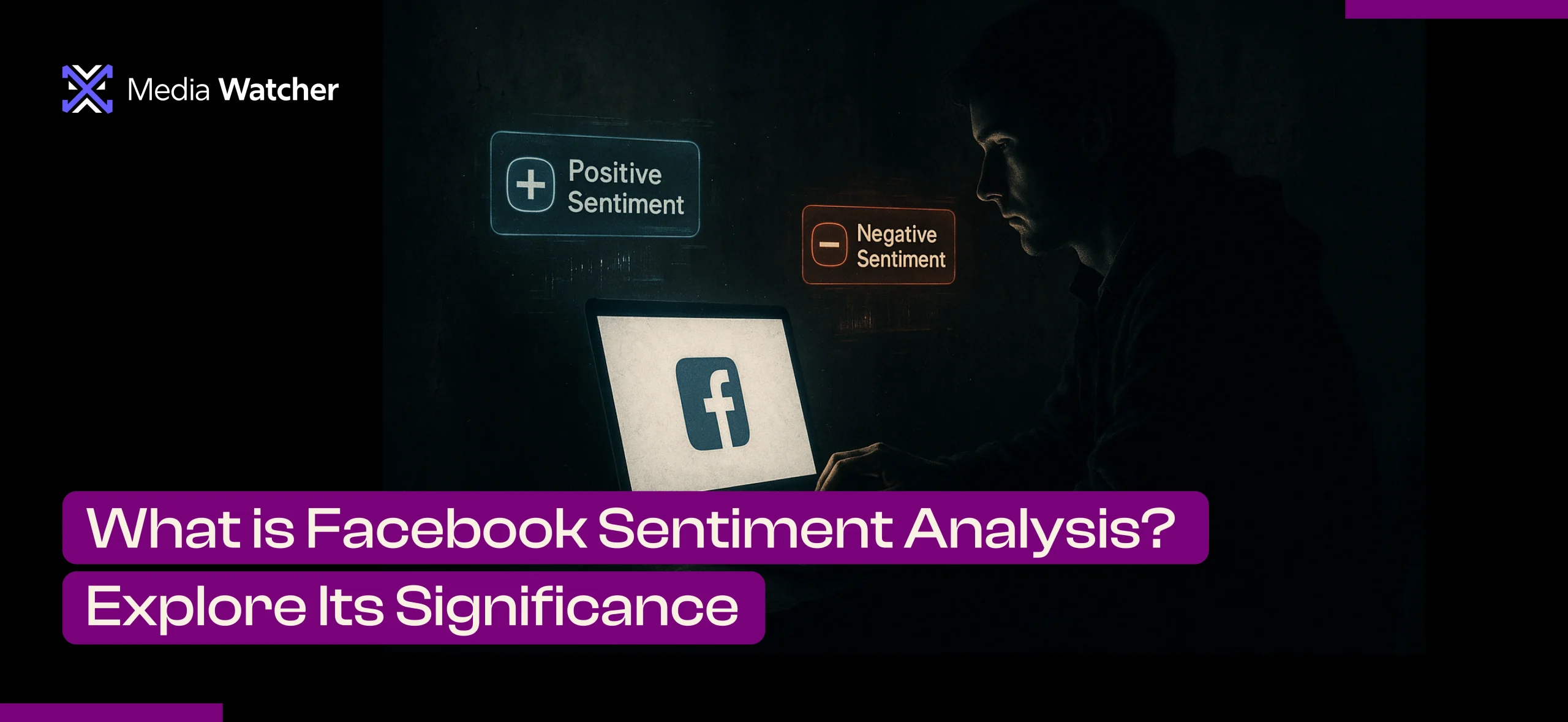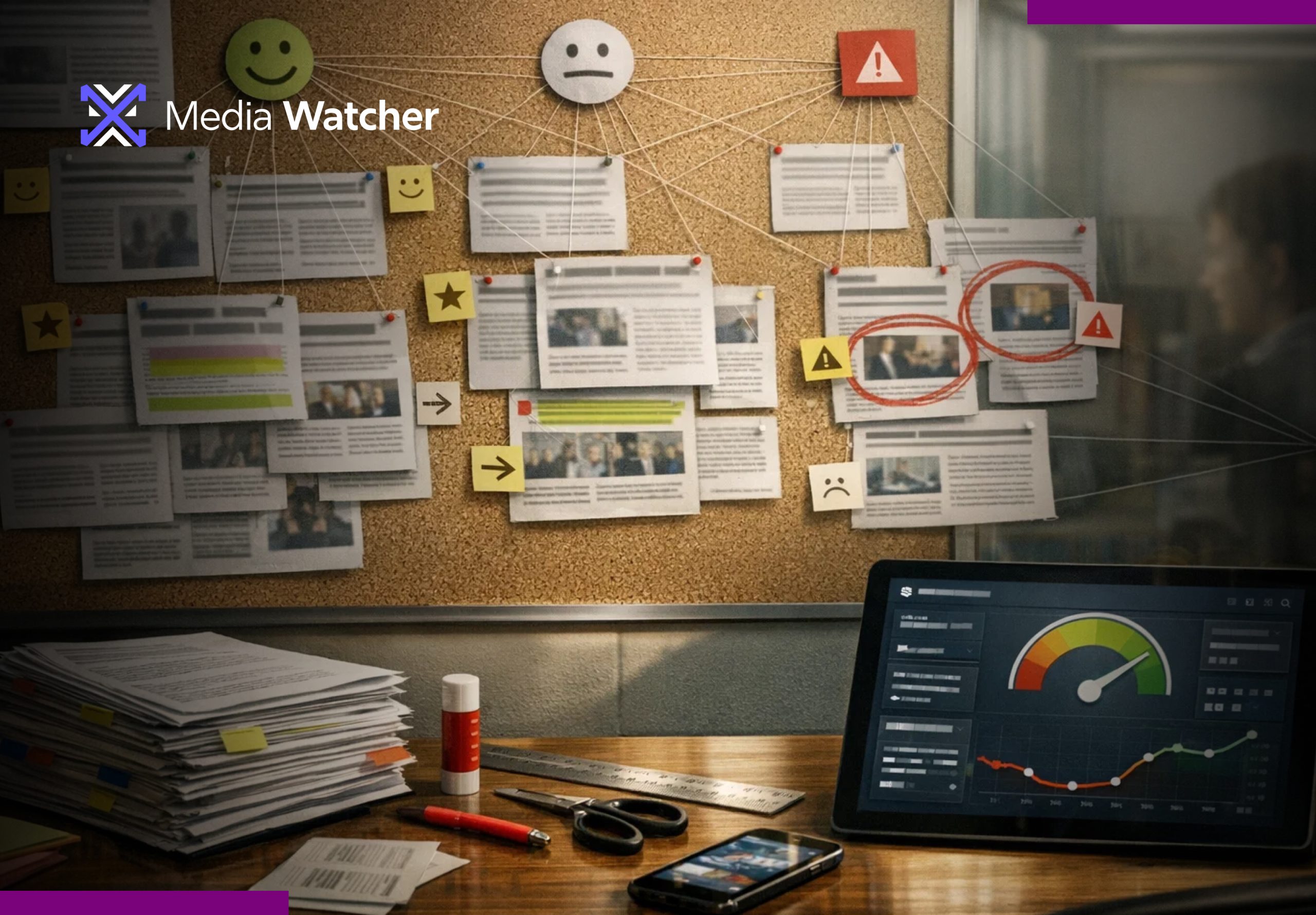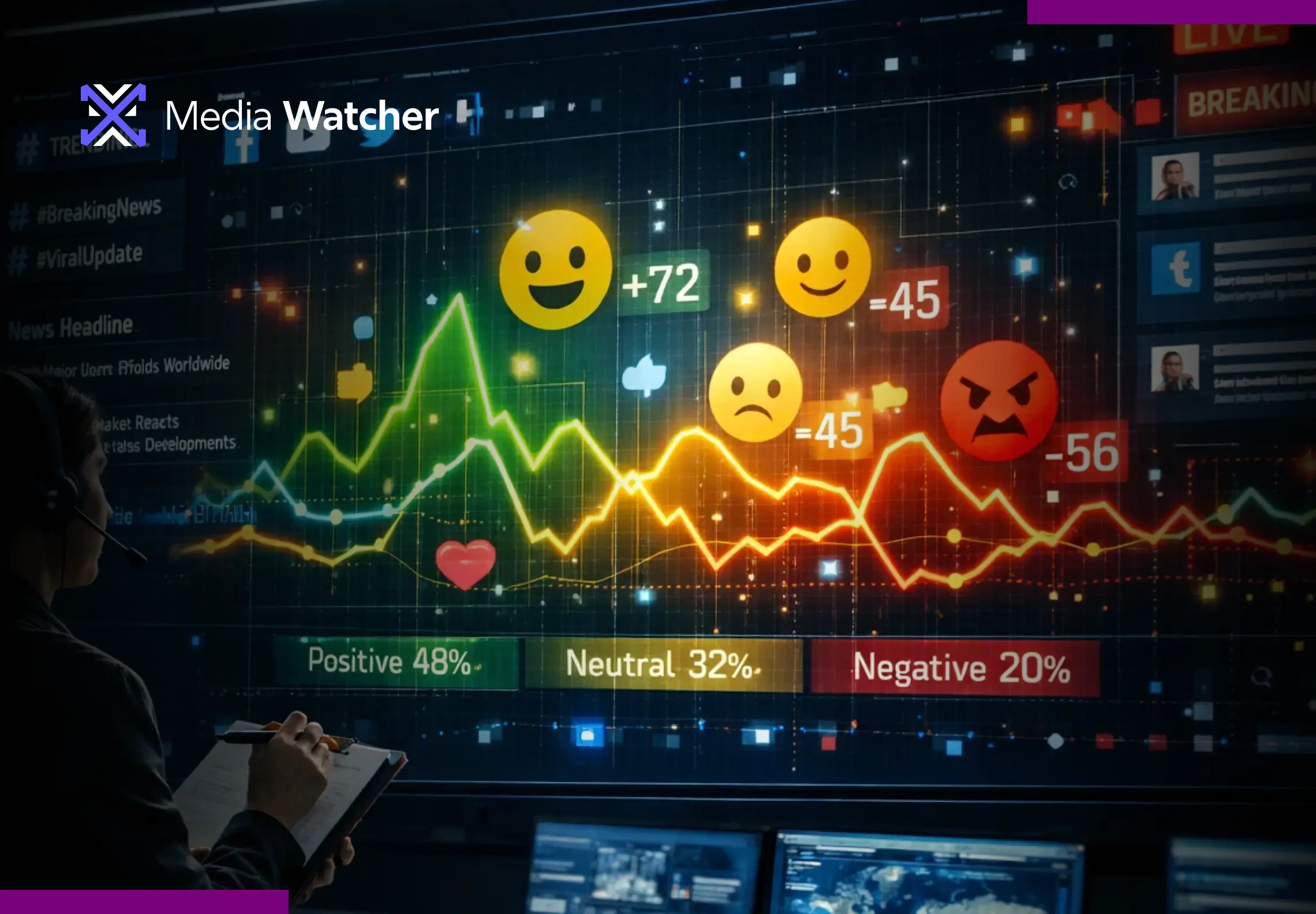In late 2020, when the first dose of the Pfizer-BioNTech COVID-19 vaccine became available nationwide in the United States, the public immediately took to Facebook to share their opinions. Within the first 72 hours, analysts reviewed approximately 200,000 Facebook posts related to the vaccine. At first glance, the general sentiment appeared positive, with messages of gratitude and celebratory posts dominating the feeds.
However, a deeper analysis of these posts and comments revealed a completely different side of the story, with uncertainty around emergency authorization and vaccine safety. These insights are crucial to understanding how the public felt regarding the launch of this vaccine.
With Facebook crossing 3.07 billion active monthly users in 2025, even a slight shift in sentiment across the platform can impact public behavior.
Sentiment on Facebook extends beyond basic reaction metrics, as it helps policymakers, government institutions, researchers, and communicators optimize campaign messaging and identify emerging trends regarding a specific product, service, or event.
This makes Facebook sentiment analysis crucial to improve overall product offerings, promote informed decision-making, and establish impact marketing strategies for the targeted audience.
What is Facebook Sentiment Analysis?
Facebook sentiment analysis is the process of examining the intent, emotions, reactions, or attitudes behind different posts and comments shared on the platform. Given its diverse user base and widespread reach, various industries use Facebook analytics to tap into users’ real-time feedback and identify how sentiments fluctuate over time and in response to certain stimuli.
Unlike Instagram, with youth-heavy engagement, or LinkedIn, with a professional skew, Facebook’s array of likes, comments, and posts spans all age groups, socioeconomic backgrounds, and geographies. This makes Facebook a significant social platform for gauging public response to policy changes and other trends in real-time.
Benefits of Sentiment Analysis on Facebook? Why It’s Important
Facebook analysis of public sentiments across public groups and local pages enables organizations to evaluate the overall emotional shifts at both the grassroots and national levels. This not only strengthens user engagement but also enhances industrial communication by tailoring the campaign messaging based on audience feedback.
Beyond its engagement and scale, the true value of Facebook lies in its cross-sector utility. Let’s examine how several industries can utilize sentiment signals from this social media platform:
Government & Public Sector
By applying sentiment analysis to Facebook’s public posts, comments, and reactions, governments can tap into a rich information trove, ranging from community responses to emergency events to young parents debating school fees in public groups.
Take the case of the Australian Bushfires in 2020. The government agencies monitored the Facebook sentiments to thoroughly examine how affected communities were responding to resource distribution and evacuation protocols.
During such instances, sentiment analysis Facebook serves a crucial role as it provides real-time insights into the groups that may show uncertainty about evacuation zones. Moreover, the emergency teams could seamlessly use these insights to refine their communication efforts and deploy support teams effectively.
Media & Journalism
For decades, Facebook has been the central emotional sensor for various media outlets and journalists. Every post, breaking headline, or story posted on the platform holds immense power as it shows the user’s reactivity to different trends or updates.
During the 2022 US Midterm Elections, several media outlets, including NPR and the Washington Post, and investigative journalists examined the response of Facebook users against several keywords, mainly economic policy and voter suppression.
This allowed the editorial teams to understand the issues that were stirring confusion or anger among the voters. In light of such instances, the incorporation of an automated sentiment analysis solution is critical as it streamlines the detection of rising frustration in real-time. Moreover, this strengthens the investigative coverage and localized reporting in minority states as well.
Sales Executives
For marketers and sales executives, timing and understanding of users’ perceptions across social platforms are everything. Facebook’s hybrid nature, which combines elements of being a part marketplace and part social network, makes it a social sandbox for buyers.
Beyond just clicks, sales executives use Facebook analytics to analyze the users’ emotional cues. This can be done to gain clarity on why certain business offerings outperform or underperform in certain regions. Moreover, they can identify the emotional aspects (such as service quality or price sensitivity) that stop users from converting.
For instance, a global food chain can analyze Facebook groups to understand why its breakfast combo ads are not reaching the intended users. By assessing the dominant comment sentiments, such as the factors leading to dissatisfaction or concerns related to higher product prices, the sales executives can refine their product variants and pricing strategies to enhance the overall campaign reach and efficiency.
Suggested Read: Decode the Crowd’s Voice with Social Media Sentiment Analysis
How to do Facebook sentiment analysis?
Whether you’re monitoring a political event or a brand launch on Facebook, sentiment analysis helps decode not just what’s being said, but also how people feel about it. Here’s a brief overview of how this analysis is done:
- Define the Goals: The first step is to define what the company needs to monitor, such as public opinion, crisis signals, or overall brand perception.
- Data Collection: Once the goals are defined, the next step is to gather comments, posts, reactions, and hashtags using monitoring tools.
- Sentiment Detection: An automated media monitoring solution then classifies the content as positive, negative, or neutral. It also classifies the emotions in each content piece.
- Context Identification: Facebook sentiments are then tracked over time, by location, and towards specific entities as well.
- Real-time Analysis: Lastly, instant media alerts are set up to examine triggers around sudden sentiment spikes, which promotes real-time risk assessment and policy management.
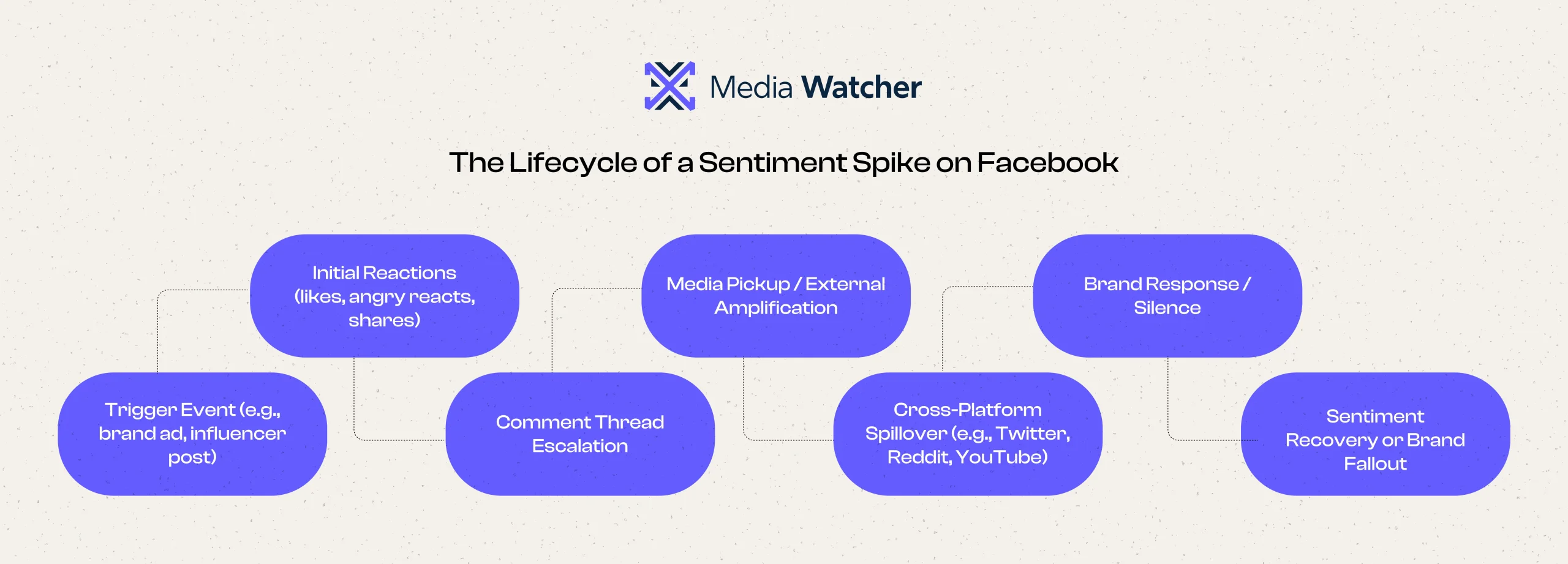
Parameters to Choose an Efficient Facebook Sentiment Analysis Tool
For most organizations, research, and government departments, the traditional social listening tools often lack the assessment of context, emotional precision, and timing. Thereby, these organizations and departments should adopt a sentiment analysis tool that adheres to specific parameters and answers the following questions:
How Fast is the Media Alert Process?
An effective sentiment assessment solution should be able to process hundreds of posts in different languages within milliseconds to facilitate effective decision-making when narratives shift.
Does it analyze Facebook Comments in addition to just the Posts?
Oftentimes, the major public feedback and opinions are expressed through the Facebook comments on various posts. Therefore, an automated and effective solution must address and examine the sentiments hidden in comments as well to capture the real user intent instantly.
Can it assign a specific sentiment to each entity separately?
Users often express their opinions on various entities under a single Facebook post. Therefore, it is crucial to understand the individual sentiment of all the entities within the post to extract detailed insights.
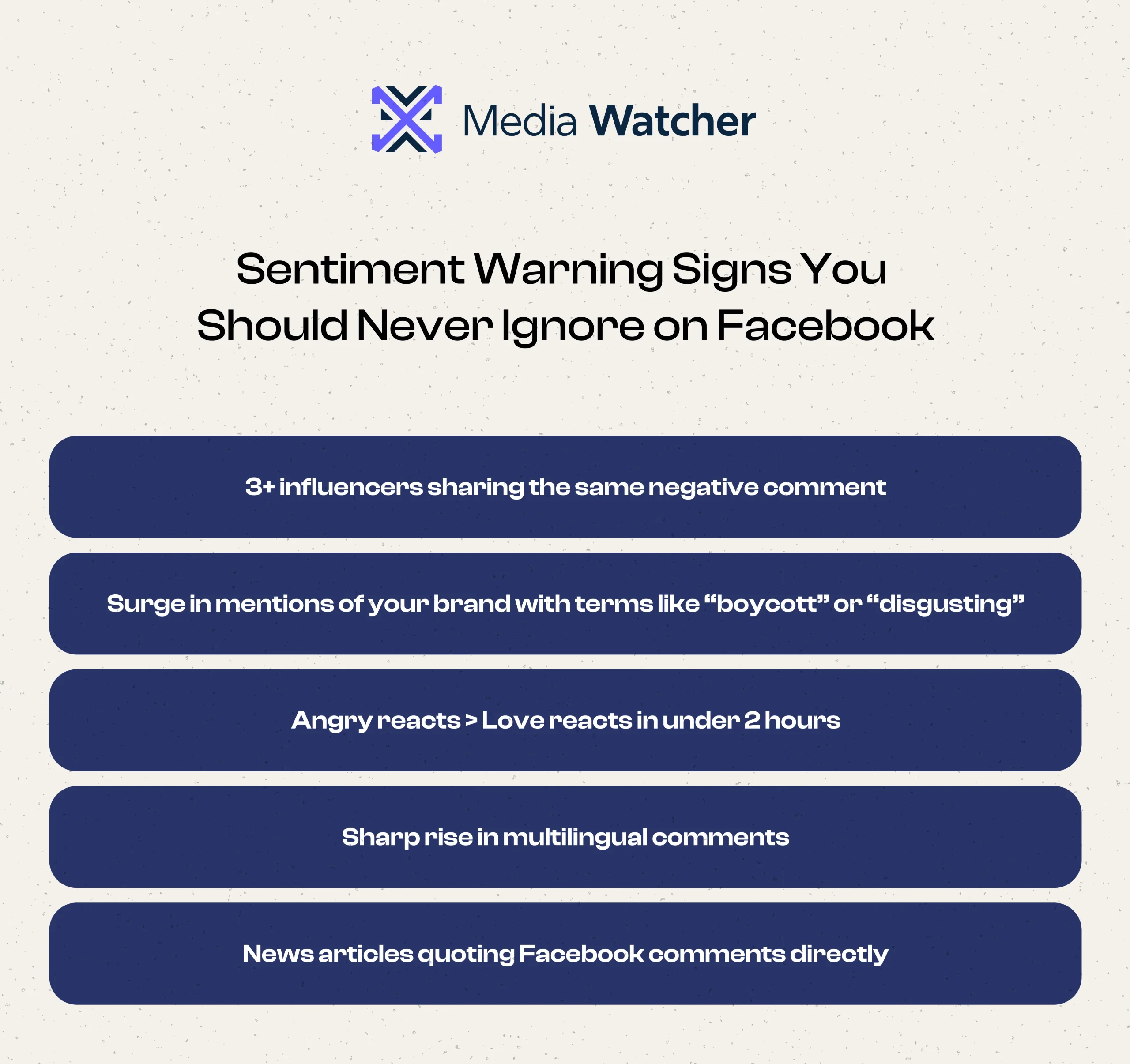
Dig Deeper Into Facebook Sentiments With Media Watcher
Facebook’s diverse user base and layered user interaction make it a critical archive of human sentiments. Brands with a demographically dispersed and large customer base can’t afford to skip automated media monitoring as part of building an effective market positioning strategy.
With Media Watcher’s real-time Facebook monitoring, organizations can detect emotional aspects shaping conversations around a specific industry, policy, government entity, or brand.
- Media Watcher’s mention, sentiment, and volume alerts enable teams to stay updated on the sentiment shifts across social platforms to understand what, where, and how the topic is being perceived.
- With its real-time social listening service, Media Watcher helps businesses amplify their campaign messaging to the right audience.
- Media watcher provides instant media alerts related to a topic of interest, whether it’s related to the mentioned volume or sentiment shifts, across all social media platforms.
Contact us or visit the Media Watcher website for a free demo!

